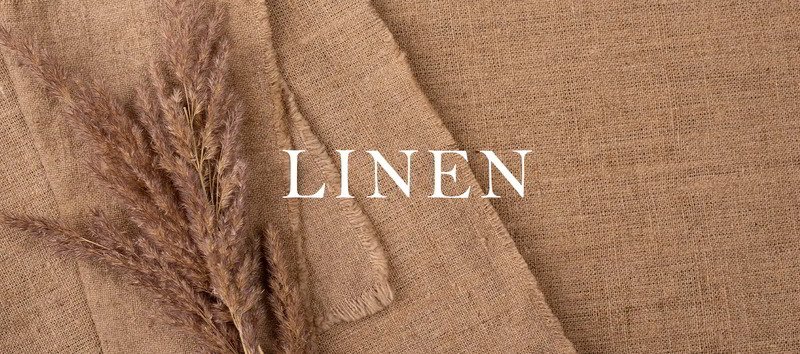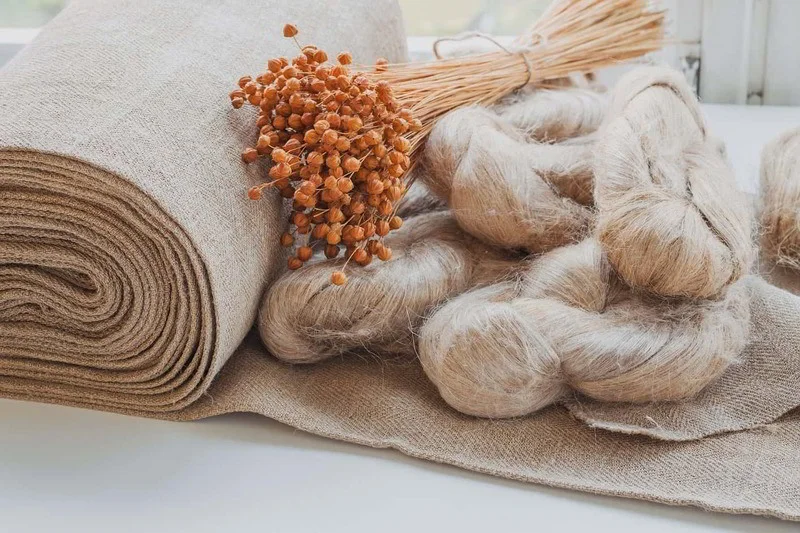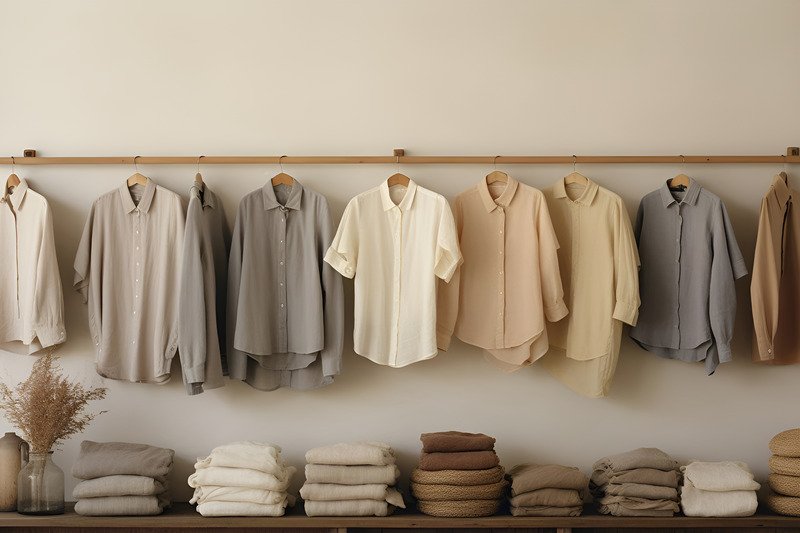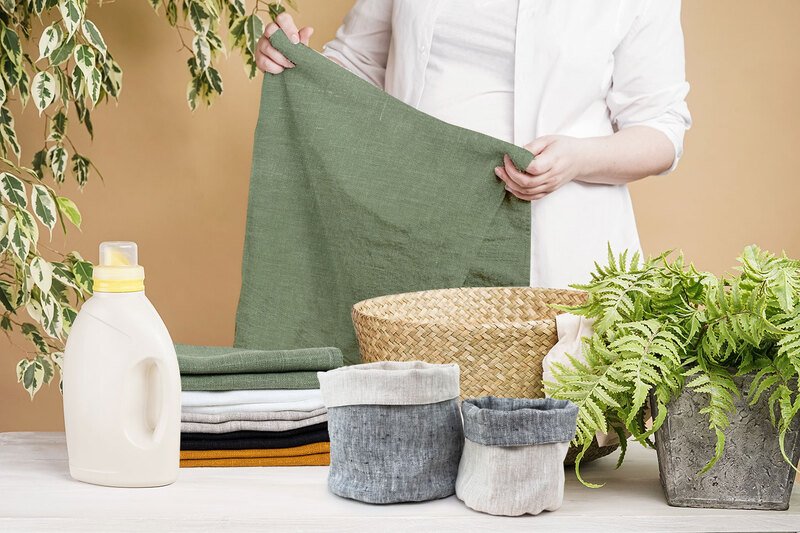What is Linen? Natural Flax Fabric: Uses, Care And Benefits
Linen is a strong, breathable, and sustainable natural fabric derived from the flax plant. It is famous for its unique texture, comfort, and long life. Used for clothing and home textiles, linen is a top choice for brands that care about quality.
Have you ever seen “linen” on a clothing label or heard people talk about linen sheets? This beautiful, natural fabric has been loved for thousands of years. It is popular for good reasons. If you want to learn about linen fabric, you are in the right place. This simple guide will tell you all about linen. We’re here to help you understand what makes it special.
1. What exactly is linen?
1.1 Definition of linen
Linen is a natural textile made from the fibers of the flax plant. A natural textile means it comes from nature. It is not man-made in a lab like polyester. People often call it “flax fabric” too. It’s known for its strength, how well it lets air pass through (breathability), and how it soaks up moisture (absorbency). These qualities make it popular for clothes and things around the house. Its natural origin is a key characteristic of linen.

1.2 The flax plant connection
Linen comes from the flax plant. Its scientific name is Linum usitatissimum, but most people just say flax. This plant often has pretty blue flowers. The strong fibers used to make linen are found inside its stem. The flax plant is one of the oldest plants humans learned to grow and use. The long fibers from the flax stem are what create the strong linen threads. Understanding this flax fiber origin helps us see linen’s value.
2. How is linen made?
Making linen is a process that takes time and care. It transforms a simple plant into beautiful fabric.
2.1 From plant to fiber
The journey of making linen involves several steps. First, farmers grow and harvest the flax. Then, a process called retting (loosening fibers from the woody stem, often using moisture) takes place. After retting, scutching (beating the stems to remove the woody parts) separates the fibers.
Finally, heckling (combing the fibers to clean them and separate short fibers from long ones) prepares them for spinning. These traditional flax processing steps are key to linen’s quality. At Packlove, we know that understanding this careful linen fiber preparation helps everyone appreciate why linen is a premium fabric.

2.2 From fiber to fabric
Once the flax fibers are clean and combed, they are spun into yarn. This spun yarn is then woven into linen fabric. These steps create linen’s special texture. You might notice small knots or thicker threads in the fabric. These are called “slubs” and are part of linen’s natural charm, not flaws. The way the yarn is spun and woven gives linen its final look and feel.
3. What makes linen special?
Linen isn’t just any fabric. It has many unique qualities that people love.
- Strength and durability: Linen is a very strong fabric. This is because flax fibers are long and tough. Interestingly, linen gets even stronger when it’s wet. This means linen items can last for many years, even for generations. It’s a durable natural fabric and a good investment.
- Breathability and absorbency: Linen is famous for its breathability. Its fibers are hollow, which allows air to flow easily. It’s also very absorbent, meaning it can take in a lot of moisture (like sweat) and then dries quickly. This helps you stay cool and comfortable, especially in warm weather.
- Texture and feel: Linen has a unique texture. When new, it can feel a bit crisp. But with every wash and use, it becomes much softer. You can often see the weave, and as mentioned, it has “slubs” (small knots or thicker threads in the fabric). These are natural and part of its charm, not flaws.
- Hypoallergenic properties: Linen is often hypoallergenic. This means it’s less likely to cause allergies. It’s gentle and natural, making it a good choice for people with sensitive skin.
- Tendency to wrinkle: It’s true, linen wrinkles easily. Some people iron it for a smooth look. Others love the relaxed, natural look of wrinkled linen. These wrinkles are part of its character.
- Eco-friendliness (briefly): Linen is often considered an eco-friendly choice. The flax plant usually needs less water and fewer pesticides to grow compared to cotton. Also, linen is biodegradable, meaning it can break down naturally at the end of its life. This makes it a good fit for sustainable textile choices. At Packlove, we see many brands choosing linen because they value sustainability. We can help provide eco-friendly fabric labels and tags to match.
4. Where linen is used?
Because of its great qualities, linen is used in many different ways. It’s a versatile fabric for both fashion and home.
4.1 Clothing
Linen is a popular choice for clothing. You’ll often find:
- Shirts
- Trousers and pants
- Dresses and skirts
- Jackets
- Suits
Its breathability makes summer clothes like linen shirts, pants, and dresses fashion favorites.

4.2 Home textiles
Linen also brings beauty and function to our homes. Common linen home goods include:
- Bed sheets and bed linen (known for durability and comfort)
- Tablecloths and napkins
- Kitchen towels (known for being very absorbent)
- Bath towels
- Curtains (they hang beautifully)
4.3 Other uses
Historically, linen’s strength made it useful for other things too, like sails for boats, strong ropes, and canvas for art. These historical uses show its long-lasting value.
5. Benefits of choosing linen
So, why do people choose linen over other fabrics? Here’s a quick summary of its main advantages.
- Comfort: Linen feels cool and pleasant against the skin. It’s very breathable.
- Durability: It’s a strong, long-lasting fabric. Buying linen is a worthwhile investment.
- Health & skin-friendliness: Being natural and hypoallergenic, it’s good for sensitive skin.
- Timeless style: Linen has a classic, elegant look that never goes out of fashion.
- Sustainability aspect: It’s often a more sustainable choice for fashion.
6. Caring for linen: Simple tips
Linen is strong, but good care will help it last even longer and look its best. Providing clear garment care info is important, and brands often wonder how to write care instructions for linen on labels. Packlove can help with that!
6.1 Washing
Properly washing linen clothes is key.
- Most linen can be machine washed on a gentle cycle.
- Use cool or lukewarm water. Hot water can cause linen to shrink, especially the first few times.
- Choose a mild detergent.
- Avoid harsh chemical bleach, as it can weaken the fibers.
These care instructions are important for linen garments and their care labels.
6.2 Drying
How you dry your linen matters.
- Air drying linen is the best method. Hang it up or lay it flat. This saves energy and results in fewer wrinkles.
- If using a dryer, choose a low heat setting. If you tumble dry on low heat, remove items when they are still slightly damp. This prevents them from getting too stiff or overly wrinkled.
6.3 Ironing
To iron or not to iron is a personal choice with linen.
- For best results when ironing linen, do it while the fabric is still damp.
- Use a medium to hot iron setting.
- Some prefer a crisp, ironed look, while others embrace linen’s natural wrinkles. There’s no wrong way for linen wrinkle care.
6.4 Storing
Properly storing linen items keeps them fresh.
- Store your linen in a cool, dry place.
- Make sure items are clean before putting them away for a long time to ensure they are well-maintained during storage.

7. Branding with linen
If you create products, choosing linen sends a strong message about your brand. It suggests natural quality, luxury, sustainability, and authenticity. Your branding strategy should reflect this.
When branding with natural materials like linen, your packaging and branding elements, such as labels and tags, should match. Think about minimalist designs, earthy colors, and tactile materials for tags (like kraft paper or textured cotton). The goal is often getting a natural look for product packaging.
For tags for linen clothes, consider options that reflect the fabric’s premium feel. Perhaps soft woven labels instead of printed ones, or hang tags made from natural paper with simple twine. These details matter for labels on natural fabrics. Linen itself can be a key part of your brand’s story.
At Packlove, our branding expertise comes from experience. We’ve seen brands that use linen effectively reinforce its qualities through their entire presentation. For instance, a simple, elegantly embossed hang tag can speak volumes.
Our team can advise on the best label types – like soft damask woven labels that won’t irritate skin when used in linen apparel, or durable heat transfer labels for a seamless look on delicate linen items. We are a knowledgeable partner in creating branding elements that truly resonate with high-quality materials like linen.
8. Frequently asked questions about linen
Here are answers to some common questions about linen:
8.1 Is linen expensive?
Generally, yes, linen is often more expensive than fabrics like cotton. This is because growing flax and making linen is a more time-consuming and labor-intensive process.
8.2 Does linen shrink?
Yes, linen can shrink. This usually happens if it’s washed in hot water or dried on high heat for the first time. Many makers pre-wash linen to reduce shrinkage. Always check the care label on your item for specific shrinkage facts.
8.3 Is linen soft?
New linen can feel a bit crisp. However, one of the most loved things about linen is that it gets much softer with every wash and use. This developing softness over time is a key characteristic.
8.4 How is linen different from cotton?
Linen and cotton are both popular natural fabrics, but they have key differences. Here’s a simple comparison:
- Source: Linen comes from the stem of the flax plant. Cotton comes from the fluffy bolls of the cotton plant.
- Fiber length: Flax fibers are longer than cotton fibers. This generally makes linen stronger and smoother over time.
- Strength: Linen is usually stronger than cotton, especially when wet.
- Absorbency & drying: Linen can absorb more moisture and dries faster than cotton. This helps keep you cooler.
- Wrinkling: Linen wrinkles much more easily and has more distinct creases than cotton.
- Texture/luster: Linen often has a unique, sometimes slightly irregular texture and can develop a subtle natural shine. Cotton tends to be more uniform.
Knowing these differences can be useful if you need to compare linen with other fabrics for labeling or when deciding on branding. It helps in choosing between linen and cotton for your products.
Explore more:
Linen, sourced from the flax plant, is a timeless fabric valued for its strength, breathability, and eco-friendly qualities, and such a premium material deserves branding that reflects its natural elegance. At Packlove, we specialize in custom solutions like soft woven labels and chic hang tags designed to perfectly complement your linen products. Contact Packlove today to create the ideal finishing touches for your brand.






















